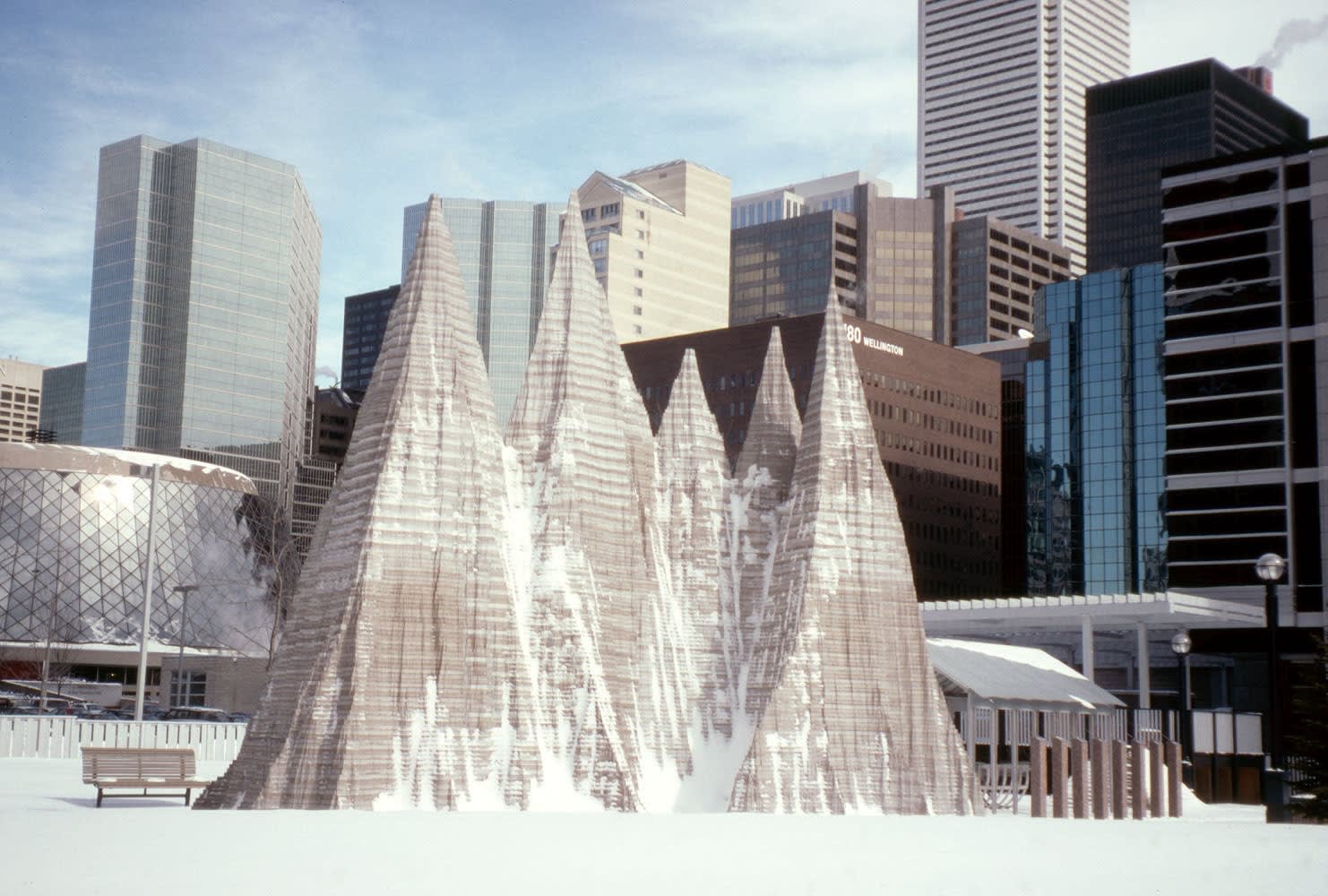Anish Kapoor has a reputation for spectacle. His steel doodle – the ‘Orbit’ – loops above East London, while his wax cannon – ‘Shooting into the Corner’ – prompted one critic to describe Kapoor’s 2009 Royal Academy exhibition as ‘a very fine mess’. ‘Mountain’ retains that sense of spectacle while also showing his work’s poetic side.
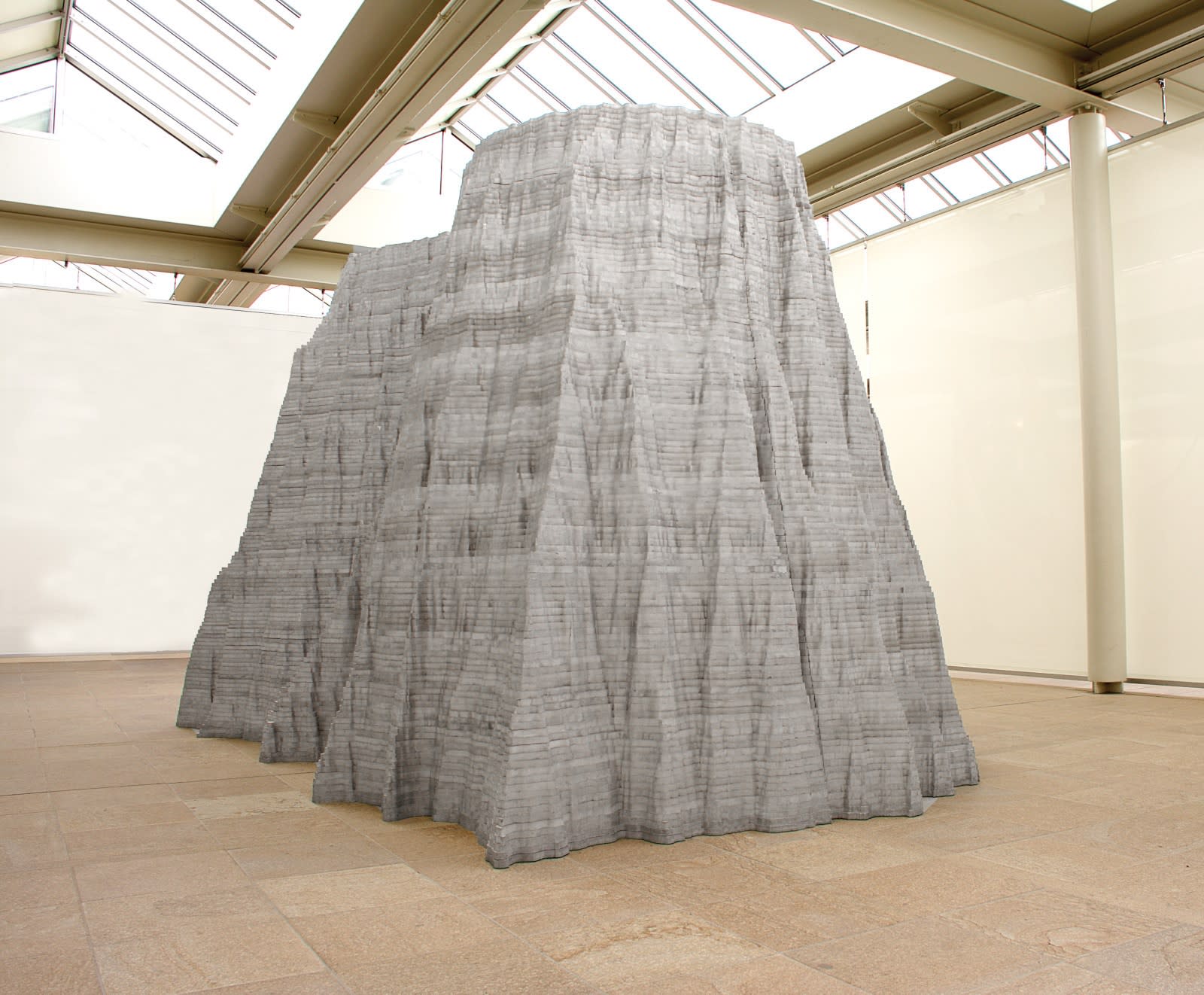
The great size of this sculpture is the main justification for its title, ‘Mountain’: it is five metres long and over two-and-a-half metres high. The philosopher Edmund Burke wrote that the sublime causes astonishment – a state in which ‘the mind is so entirely filled with its object, that it cannot entertain any other, nor by consequence reason on that object which employs it.’ A similar effect results from experiencing Kapoor’s sculpture. However, unlike Burke’s eighteenth-century formulation of the sublime, and contemporaneous representations of mountains which followed, such as Alexandre Calame’s Alpine scenes, Mountain is not just sensational and sublime: it also deploys a sophisticated combination of spiritual iconography and advanced manufacturing techniques.
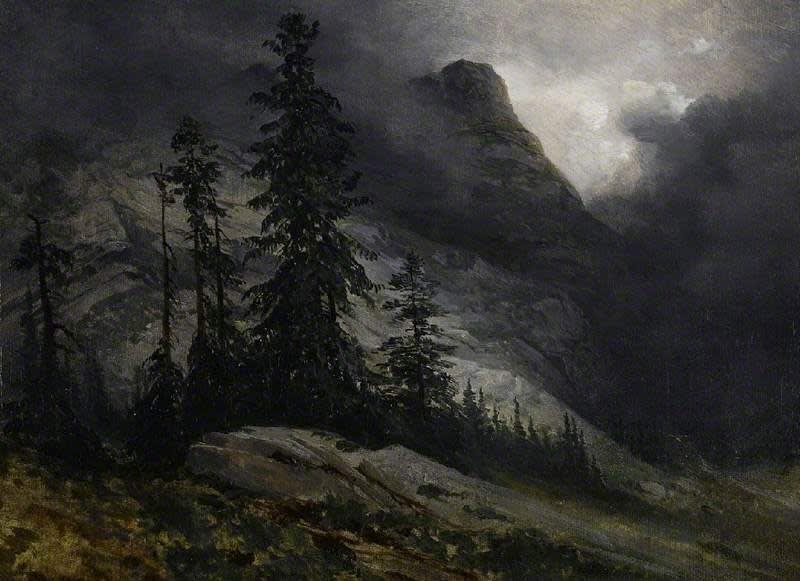
Speaking in 2002, Kapoor explained his approach to art and credited the influence of Romanian-born artist Paul Neagu.
He identified that the purpose of being an artist was somehow not to make more-or-less-interesting objects, but that the language of the eye has psychological, physiological, philosophical, even metaphysical implications. That felt to me what I was looking for.
Kapoor’s art is not like other contemporary forms of spectacle such as cinema or advertising. It is loaded with meaning and one’s initial astonishment often subsides into a mood of reflection. Ever since his first visit to Uluru in the 1980s, the imagery of the mountain has recurred in his work – at once spectacular and semi-religious, and bearing an unspoken association to the sacred red rock. Kapoor has made several iterations of the mountain in his work, whether painted wood, flawless marble or rustic cast iron, and in each case a vast sculptural presence is accompanied by an undertow of ritual and magic.
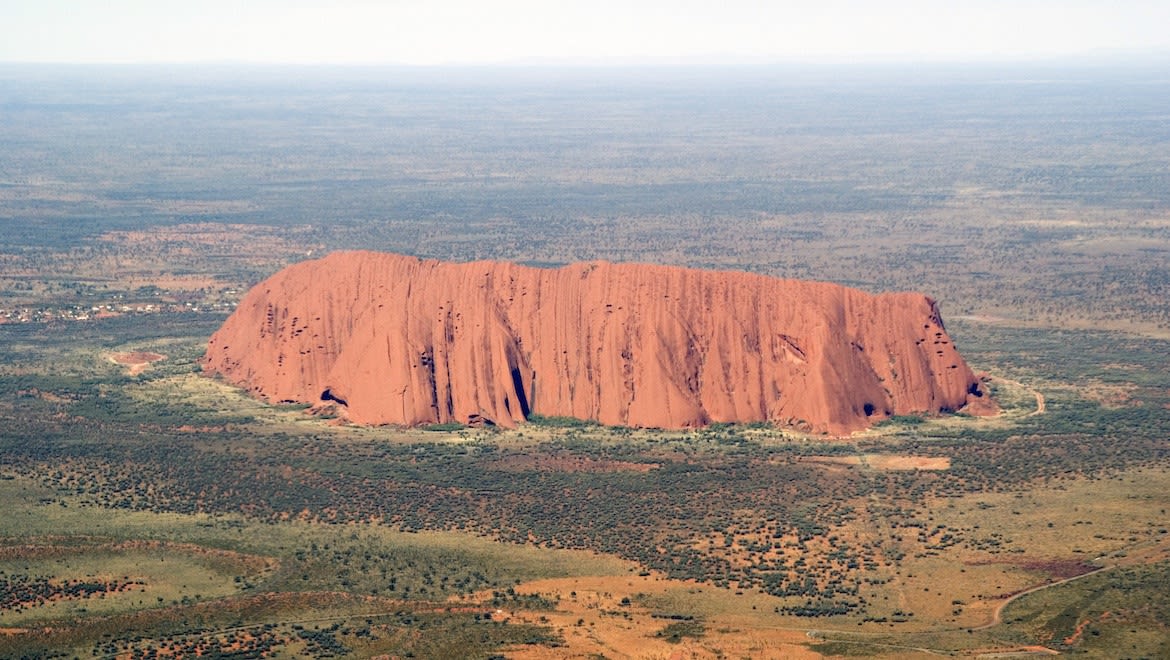
The spiritual connotations of Mountain are further magnified by the near-miraculous process of manufacture by which it was created. Like many of the most successful contemporary artists, from Bridget Riley and David Hockney to Damien Hirst and Antony Gormley, Kapoor relies on the assistance and technical expertise of a large studio. Many of his works, including this one, are fabricated by Adam Lowe's Madrid-based workshop, Factum Arte. Though all decisions of aesthetic importance are taken by the artist, a work like Mountain could not be realised without specialist expertise and engineering precision. The work is composed from 120 layers of aluminium, each measuring two centimetres in depth. They are stacked up one on top of the other and taper inwards as the structure grows taller; each piece relates to those above and below it, while maintaining an outline which is subtly different from the shape of its neighbours. Made at a time when computer aided design was undergoing rapid development, Mountain’s composite parts were cut using a water jet cutter – a refined tool capable of realising the complex silhouettes of Kapoor’s design. Each layer of aluminium in the work has a unique profile which could only be cut with such precision by a machine.
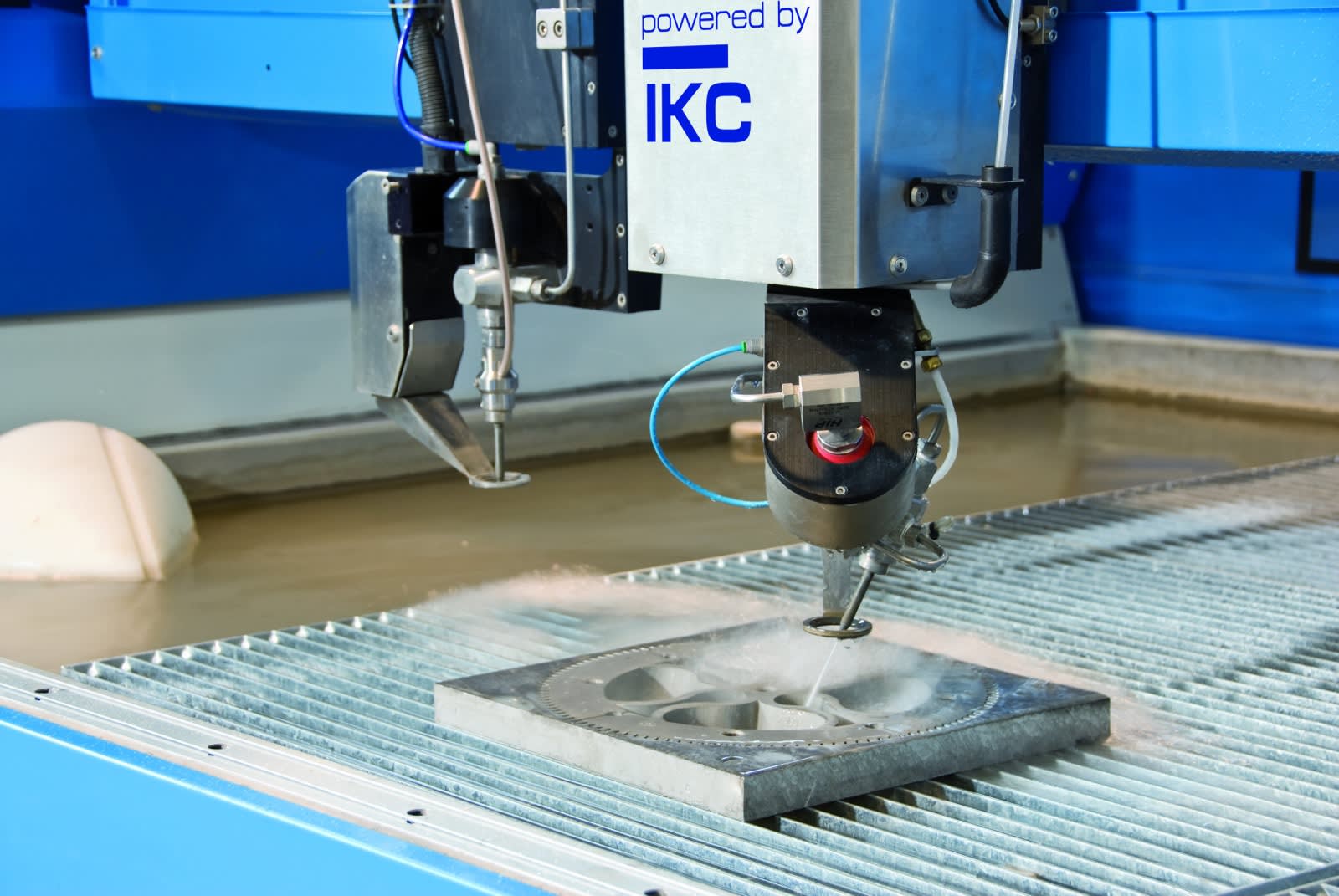
It has long been the highest ambition of visual artists to make one material look like another. Medieval craftsmen of the Meuse Valley made enamel resemble precious stones, Dürer made oil paint resemble marble, and in Mountain, Kapoor has created a twofold impression from aluminium: the outer face of the sculpture has at once qualities of rock and fabric. The intricacy of the profile, riddled with small inlets and projections, suggests both the fall of a curtain and the rocky face of a sea cliff. The central difference between Kapoor and artists specialised in manual craft-based skills is the degree of precision in their work. Mountain demonstrates a degree of unschematic complexity which is usually found in nature, not art, and the work’s organic quality is underpinned by a highly specific, computer aided design. The Greek word for a miraculous image – one made by the saints or by God – is ‘acheiropoieta’, which translates literally as ‘made without hands’. The term might aptly be applied to Kapoor’s Mountain: an artistic achievement of the digital era.
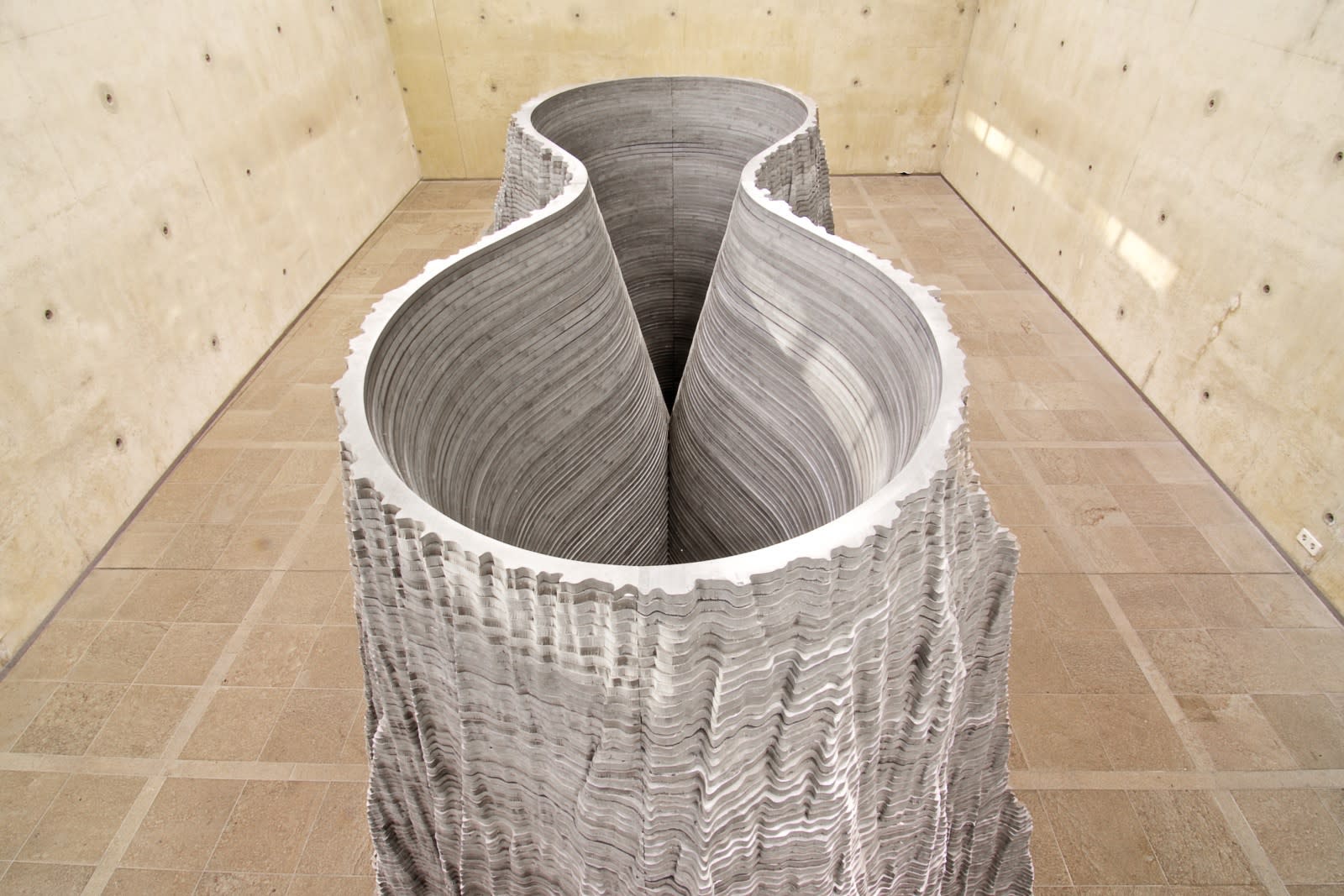
What distinguishes Mountain from other works by Kapoor is the numinous void at its centre. Rather than reach upwards in towering peaks, as with Kapoor’s mountain in Simcoe Park, Toronto, pictured below, it more closely resembles the blunt, mound-like presence of Uluru. Within the sculpture, the consecutively stacked layers of aluminium are rounded to form a smooth, continuous surface. This ‘negative space’ might be regarded as an inversion of the peaked mountains which Kapoor made in the 1990s. As with other aspects of the artist’s work, this obvious formal contrast speaks to a more complicated set of underlying antagonisms – between yin and yang, void and plenum, interior and exterior, and so on. Taken together with the work’s subtle outlines, veiled associations and totemic grandeur, this vague aura of profound ideas is the final step that elevates Kapoor’s Mountain to the highest tier of contemporary art.
